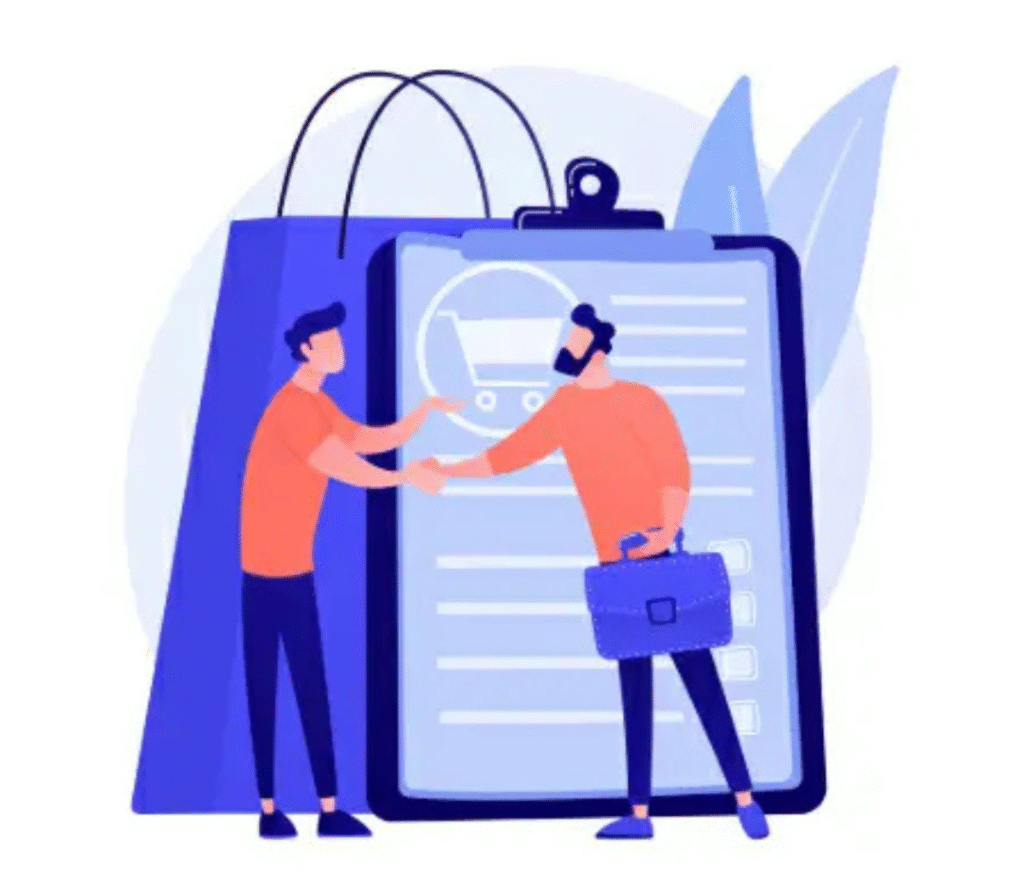With the advancement of technology, several tools have emerged on the market, but this diversity can also make it difficult to choose a tool and understand all its features. This is where customer onboarding comes in, a process designed to eliminate these barriers.
The goal of onboarding is to create a solid connection between the brand and the consumer, accompanying them throughout their journey. From the first contact with the company to after-sales support.
This practice seeks to clearly present the advantages and characteristics of the product or service purchased, while collecting information about the customer. With this data, it is possible to better understand their needs and offer more appropriate and personalized alternatives.
But what is customer onboarding? In this article, we will tell you everything about this process, its benefits, and how to successfully onboard customers. Check it out!
What is customer onboarding?
Customer onboarding is a planned process designed to guide new users in using a product or service, helping them overcome initial obstacles, such as technical adjustments, and quickly achieve a relevant goal, called first value.
This first value corresponds to a concrete and measurable result, capable of demonstrating the benefits of the investment made, encouraging customer engagement, and strengthening their perception of the value of the solution.
In practice, onboarding acts as a step-by-step guide, facilitating customer adaptation, reducing difficulties, and reinforcing the usefulness and positive impact of the solution offered by the company.

How does customer onboarding work?
When purchasing a product or contracting a service, customers usually have expectations about what they will receive, seeking to achieve a specific goal. In the case of more complex solutions, customer onboarding acts as an initial step to align product use with consumer goals.
If the product does not meet expectations or is not fully understood, customers tend to abandon its use or seek alternatives, ceasing to be loyal to the brand. Therefore, ensuring that they understand how the solution works and its value is essential.
Implementing an initial guidance strategy involves offering training, support, and service channels to ensure that the product is used to its full potential, clarify doubts, and assist with initial configuration.
This process can take place in person or through digital onboarding, depending on the company’s structure and customer profile.
How important is customer onboarding?
Customer onboarding plays a key role in the post-purchase experience. It conveys care and commitment to user satisfaction, offering support in an agile, intuitive, and personalized way.
In this way, in addition to highlighting the advantages of the product or service and showing the return on investment, the integration process creates incentives that consolidate the relationship between customer and company.
You’ve probably heard the phrase, “First impressions are everything.” This concept also applies to the business world.
A customer’s initial interactions with a brand directly influence how they perceive the value of the solution and even their confidence that the product or service will truly meet their needs.
Therefore, adopting a structured customer onboarding process is essential to reinforce the perception of value from the beginning of the journey. A good experience at this stage can open the door to new purchases or contracts, strengthen the relationship, and keep the customer active for longer.
Advantages of customer onboarding
Now that you know what customer onboarding is and how important this process is for your company, let’s explore these benefits in more detail. It brings strategic advantages that directly impact satisfaction, loyalty, and even business profitability.
Provide clear guidance
In order for customers to achieve good results, it is essential to show them how to use the solution correctly. This is especially true for more complex products or services, where a lack of instruction can lead to frustration or even misuse.
Defining the path, presenting each step, and educating customers on how to follow that path is one of the most effective ways to lead them to success.
Provide technical support
Customer onboarding is also an opportunity to help customers configure more advanced features that require specialized knowledge. With this support, any barriers to use are eliminated early on, ensuring that customers can take advantage of all features without difficulty.
Deliver a quick result
A motivated customer is one who sees value early on. That’s why it’s important for onboarding to provide a noticeable gain in a short time, even if it’s modest.
This first result, known as first value, serves as fuel for the customer to remain engaged in using the product or service. In the case of a food processor, for example, the first value could be the ease of chopping onions in seconds.
Strengthen the relationship
Close monitoring during onboarding brings the customer closer to the company. Having a professional available, whether remotely or in person, creates a reliable point of contact for clarifying doubts and resolving potential obstacles.
Indicate next steps
In addition to delivering the first value, customer onboarding should clearly show what comes next. This keeps the customer interested and prevents engagement from dropping off after the initial phase, continuously driving them toward their goals.
Build customer loyalty
Acquiring new customers is often much more expensive than retaining existing ones. Quality onboarding helps reduce cancellations, prolong the relationship with the brand, and increase the length of time customers remain in the active base.
Improve the product
During onboarding, it is possible to closely observe how the customer interacts with the solution. This contact generates valuable information for improving functionality, correcting flaws, and even creating new features, making the product more competitive and better suited to market needs.
Reducing the Churn Rate
As mentioned earlier, onboarding plays an important role in reducing this metric, which represents significant losses for recurring model companies.
What are the types of customer onboarding?
Companies can adopt different onboarding formats, which vary according to customer profiles, product or service complexity, and business model. Among the most commonly used are:
1. Integração self-service
Focused on simple and easy-to-understand solutions, this format allows customers to guide their own initial journey using support materials such as manuals, video tutorials, and interactive guides.
2. Assisted onboarding
Suitable for more complex offers, it involves direct support from a company professional who guides the customer through online meetings or face-to-face meetings, who may be an account manager or a specialist.
3. Collective onboarding
Used when it is possible to serve several customers with similar needs, making the process more economical. It is usually carried out through workshops or live broadcasts that cover the initial steps and usage tips.
4. Hybrid onboarding
It combines the autonomy of the self-service model with the personalized support of assisted onboarding, allowing customers to move forward on their own through part of the process, but receive help whenever necessary.
The ideal format should be defined based on the particularities of the target audience and the desire to offer an efficient and satisfying experience from the first contact.

How to onboard customers
Now that you understand the concept and advantages of customer onboarding, it’s time to put this method into practice.
1. Analyze your starting point
First of all, check whether your company already provides some kind of initial training or follow-up. If the process exists but the results are not satisfactory, focus on identifying and correcting the flaws.
If you are starting from scratch, prepare to put together a dedicated team and record all the ideas and insights generated throughout the following steps.
2. Transition between sales and implementation
This is the customer’s first direct contact with the customer onboarding team, and the ideal time to make an excellent impression. Gather and validate all information collected by the sales department and, if necessary, align details with the consultant who closed the deal.
It is essential to understand the customer’s segment, products, and objectives, clearly presenting the onboarding methodology, exclusive materials, documentation, knowledge base, and support channels.
Maintaining proximity and creating a genuine connection strengthens the relationship. After all, big deals don’t just happen between companies, but between people. Finally, make it clear what will be done until the next meeting, with well-defined tasks.
3. Build a Customer Success area
The customer success department is responsible for ensuring that consumers achieve positive results with the product or service they have purchased, thereby increasing retention and loyalty.
Within this department, customer onboarding is one of the most important activities. Therefore, the first step in implementing an efficient process is to create or strengthen this area within your company.
4. Build a team with the ideal skills
If your product requires elaborate integrations, advanced technical adjustments, or any high-level configuration, it is essential to have professionals who are prepared to handle these challenges.
The person responsible for implementation needs to combine technical knowledge with interpersonal skills, such as empathy, proactivity, and a consultative view of the customer’s market. This reinforces not only confidence in the solution, but also the tactical and strategic credibility of your company.
Therefore, investing in a qualified onboarding team is not a cost, but a strategy. The return, in the medium and long term, comes in the form of customer satisfaction, loyalty, and increased revenue.
5. Structure a plan with clear objectives
Understanding the client’s short-, medium-, and long-term goals is crucial for successful implementation. Record these expectations and create an action plan with defined responsibilities and deadlines.
The indicators must be measurable, allowing results to be evaluated at the end of the onboarding process. This makes it possible to present improvements, best practices, and guidelines so that the client can operate independently and with high performance.
6. Define what “success” means for each client
The concept of success can vary depending on the customer’s profile and objectives. Therefore, it is important to understand what results they are looking for and which features of your solution are essential to achieving those results.
Group these criteria, customize them when necessary, and direct the onboarding process so that the customer quickly achieves “first value.”
7. Be inspired by our most successful customers
Understanding who your most prominent customers are helps shape a more assertive onboarding process. Analyze the profile of this audience: maturity, availability, roles performed, hierarchical level, limitations, and decision-making power.
Also map the pain points and challenges they face to align your solution with their real needs. Observe what works well with your best customers and create a manual with proven practices, real cases, and practical examples to guide new users to achieve the same level of success.
8. Establish the service format
The implementation process can take different forms: face-to-face meetings, virtual training, or even a self-service method, with educational materials in text and video format.
The choice should consider the customer’s profile, the complexity of the product, the average ticket, and the Lifetime Value. Small and medium-sized companies with good digital maturity, for example, can be served remotely, reducing costs and increasing profitability.
For large corporate clients, especially in B2B, higher tickets and more robust solutions may require in-person training, longer onboarding journeys, and follow-up with risk mapping and detailed steps.
9. Track engagement
Continued use of the software is a good indicator of satisfaction. Drops in usage may signal a loss of interest or difficulty in use. In these situations, the Customer Success team should act quickly, offering support and reinforcing the most effective practices for extracting value from the solution.
10. Monitor service and CRM data
Tracking support requests, complaints, and service metrics helps identify signs of dissatisfaction. Define clear indicators and use CRM to map interactions, identify patterns, and take preventive action.
Looking for a CRM platform? Check out our complete guide to Brevo.
11.Use satisfaction surveys
Tools such as NPS (Net Promoter Score) help measure customer perception and identify potential areas for improvement. When you detect dissatisfaction, anticipate problems and adjust the onboarding process for new customers, reducing the risk of churn.
How technology helps the customer onboarding process
Technology has become an indispensable ally in optimizing customer onboarding, simplifying processes and increasing efficiency at every stage. With digital resources, it is possible to transform the beginning of the consumer journey into a much more agile, secure, and personalized experience.
Data collection and biometrics
The registration process no longer depends on time-consuming travel and manual entries. Today, all that is required is the digital submission of documents, whose information is automatically extracted by OCR software, reducing errors and saving time.
Biometrics has also become part of this stage, being collected in a simple way, such as in a selfie taken by the cell phone itself. This data is compared to public databases to confirm identities and reinforce security.
Automation of repetitive processes
With automated flows, you can guide customers step by step, sending personalized messages, reminders, and instructions via email or in-app notifications. This speeds up adaptation, saves users time, and reduces the demand on internal staff.
Artificial Intelligence for personalization
AI algorithms can tailor the onboarding process to each customer’s behavior, offering customized suggestions, resources, and guidance. Intelligent chatbots, for example, can answer questions in real time and guide users through the process, creating a more interactive experience.
If you need a chatbot, JivoChat offers chatbots for 24/7 customer service, capable of answering common questions, qualifying potential customers, and forwarding conversations to human agents when necessary.

These chatbots can be integrated with platforms such as WhatsApp, Facebook, and websites. In addition, they use artificial intelligence to suggest quick responses and automate repetitive tasks, increasing team productivity and making customer service more efficient.
Data analysis
Data analysis tools can identify customer profiles in seconds, helping to verify risks and target unique experiences. With predictive analytics, it is possible to make even safer decisions at the time of registration.
Optimized background check
Background checks, once slow and laborious, can now be automated using AI, machine learning, and big data.
Cross-referencing data with relevant sources identifies possible links to illegal activities or quickly confirms identity, improving the compliance experience for customers.
Preventive risk detection
Digital mechanisms enable the creation of more accurate risk scores, with features such as facial recognition or fingerprinting. This makes it possible to approve or reject registrations in a more informed and secure manner, reducing losses and fraud.
Integration with marketing and CRM platforms
With the connection between tools, customer onboarding becomes part of a complete view of the customer journey, enabling personalized follow-up actions and more assertive strategies.
Example of customer onboarding process
The customer onboarding process is crucial for new customers to understand, use, and perceive value in a product or service. When well structured, it accelerates adaptation and encourages loyalty.
Below is an example applied to a software-as-a-service (SaaS) company that adopts a 100% digital flow to guide users from their first access to familiarization with the tool.
1. Reception and presentation of the solution
Once the account is created, the customer receives a welcome message, either by email or by notification in the system. This first contact may include:
- A short video showing, in a simple way, how the platform works and its benefits.
- Links to introductory tutorials and instructions for configuration or integration with other systems.
2. Guided demonstration
The user is guided through a tour of the platform, which presents the layout and essential functions. At this stage, they can:
- Adjust settings to tailor the tool to your needs (for example, set preferences or connect external accounts).
- Perform initial actions such as importing data and activating integrations with tools you already use, such as CRMs or marketing platforms.
3. Delivery of the first installment
The focus is on providing a real perception of benefit as soon as possible. This means allowing the customer to see practical results right from the start.
Example: in a CRM, the user could import contacts and create simple automation right from the first interactions, quickly realizing the efficiency gains.
4. Ongoing support and training
During the adaptation period, the company provides several channels for clarifying questions and learning more about how to use the system:
- Chatbots for instant answers.
- Videos and webinars explaining more advanced features.
- Human support via email or phone for specific situations.
5. Impression collection
Once the initial stage is complete, the customer is invited to evaluate the experience. This helps with continuous improvement of the process and ensures that they are making the most of the features.
Example: sending a quick questionnaire or satisfaction survey to measure the clarity, usefulness, and efficiency of the onboarding process.
Have you learned what customer onboarding is?
Adopting a well-structured customer onboarding process helps engage your customers from the first contact, reduce questions, and increase satisfaction with your brand.
We hope this article has provided you with useful ideas for developing an efficient, welcoming onboarding process that strengthens your bond with your customers.
As a final recommendation, we suggest using a professional online chat platform, such as JivoChat, to monitor each stage of onboarding, send proactive messages, and ensure that your customers feel supported and valued from the start.

